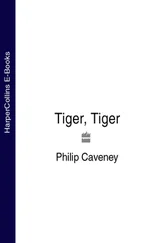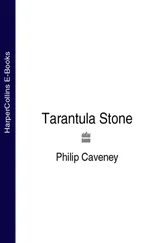1 ...6 7 8 10 11 12 ...19 In earlier discussing the criteria which may be important to cavernicoles in choosing their habitats, I included the apparently pedantic phrase ‘gas mix’, rather than ‘air’ in my list of the media which may fill mesocavernous voids. I did so because it seems that the atmosphere of mesocaverns may differ substantially from that found in open macrocaverns with a good air circulation (which generally have much the same atmosphere as the outside world). Bacterial decomposition of organic material in small spaces frequently results in unusually high atmospheric concentrations of carbon dioxide. Frank Howarth’s new Australian cavernicoles, mentioned earlier, were found in poorly ventilated lava caves which are thought to share the atmosphere of the mesocavernous spaces in the surrounding basalt. The air in these caves is saturated with water vapour and contains around 250 times more carbon dioxide than normal air. Bad air caves occur in Britain too, but have not yet been biologically investigated.
Finally, we may seek to distinguish cave habitats from non-cave habitats in terms of their food supply. Early cave biologists, whose experience of cave faunas was mainly confined to the larger, more easily explored ‘fossil’ macrocaverns (those no longer bearing the watercourses which formed them) of temperate European limestone areas, concluded that cave animals were perpetually starved. While food resources may be very thinly distributed in such cave habitats, in others (and particularly in the tropics) food may be superabundant. The biotas of food-poor caves are adapted to eke out what little energy is available, while those of food-rich caves are adapted to a life of plenty. Caves may contain a wide range of food sources, including living vegetation (tree roots, saprophytic plants and fungi which get their energy by digesting organic matter rather than by trapping sunlight, fruits carried in by vertebrates), living invertebrate or vertebrate animals, and all kinds of detritus. Cavernicoles may be plant-, fungus-, detritus- or bacteria-feeders, predators, parasites or a combination of these. In short, caves are more ecologically diverse than most biologists realize.
To summarize then, cave habitats may be defined as ‘perpetually-dark voids, more than one millimetre in diameter (and sometimes much larger), bounded by rock or similar inorganic materials, and filled with gas (‘fresh’ or ‘bad’ air) and fresh or salt water.’Within such habitats, the microclimatic regime and the type and quantity of the available food-supply largely determines the species composition of the cave community. Only the largest (and often, in our islands, the least populated) cave habitats are accessible to human observers, so that we know a good deal less about the composition and functioning of cave communities in Britain and Ireland than we do about most other natural communities of our islands.
What lives in caves?
Of the voluminous literature dealing with the biota of caves, two works of this century stand out for sheer scope of vision. The first, B. Wolf’s Animalium Cavernarum Catalogus , published in three parts between 1934 and 1938, lists all animal species recorded from caves to that date. The second, by A. Vandel, published in French in 1964, discusses the biota and biology of caves worldwide. An English translation, published by Pergamon Press in 1965 as Biospeleology: The Biology of Cavernicolous Animals , is perhaps still the most useful general text despite its wacky view of evolution in caves. L. Botosaneanu’s book Stygofauna Mundi , published in 1986, gives a more up-to-date account of the fauna of subterranean waters, but there is need for a similar treatment of the terrestrial cave fauna to take into account the spate of biological discoveries in tropical caves during the decade and a half since Vandel’s book. The following brief summary illustrates the range of life forms presently known to inhabit caves.
Fig. 2.2 Leptodirus hohenwarti , a highly cave-evolved beetle discovered in 1832 by the Count von Hohenwart in the Slovenian cave of Postojna Jama.
Kingdom MONERA
Phylum Bacteria
Well represented in caves. Includes saprophytes, pathogens and chemoautotrophs (which live by oxidizing or reducing iron and sulphur compounds). Bacteria are at the base of many cave food-chains.
Phylum Cyanobacteria
Some species are capable of synthesizing their pigments in the absence of light. Various Chroococcaceae are implemented in the formation of complex cave mineral deposits such as moon milk and tufa (see glossary).
Kingdom PROTISTA
Phyla Phytoflagellata, Zooflagellata, Sarcodina, Ciliophora, Sporozoa
Protista are often abundant in interstitial waters and many species occur in caves. In Turkmenistan, brackish wells in the Kara-Kum desert contain abundant populations of at least 10 species of unusually tiny, thin-shelled Foraminifera. Cave clays often contain Mastigophora, Sarcodina, Amoebina and some Ciliata.
Kingdom PLANTAE
Phylum Chlorophyta
Various free-living algae, such as Chlorella, Scenedesmus and Pleurococcus are found growing deep inside caves. Though able to synthesize pigments in the dark, they appear to use non-photosynthetic metabolic pathways. The other plant phyla Rhodophyta, Phaeophyta, Bryophyta are essentially absent from the dark parts of caves. The phylum Tracheophyta is represented by a very few aberrant saprophytic species which can live independently of sunlight.
Kingdom FUNGI
Phyla Zygomycetes, Ascomycetes, Basidiomycetes, Myxomycetes
Fungi are important in cave ecosystems. Most are saprophytic on organic material washed into caves and form the main food base of cave communities. Some are epizoic (live on the outer surface of animals) or parasitic. Most members of the phylum Oomycetes are parasitic on flowering plants and therefore not represented in caves.
Kingdom ANIMALIA
Phylum Porifera
Encrusting sponges may be the commonest organisms in tidally flushed submarine caves.
Phylum Coelenterata
Hydra viridissima occurs in groundwaters in the Southern Carpathians of Europe. Marine Hydrozoa and Anthozoa are commonly found in submarine caves.
Phylum Platyhelminthes
Rhabdocoel Turbellaria are common in wells, springs and groundwaters. Cave-evolved Triclads have a worldwide distribution, with most species within three planarian families: Dendrocoelidae, Kenkiidae and Planariidae.
Phylum Nematoda
Free-living nematodes are frequent in groundwaters, caves and mines worldwide. Several freshwater species of the otherwise exclusively marine Desmoscolecidae inhabit caves in Slovenia.
Phyla Nemertinea and Rotifera
A few species of these small creatures inhabit interstitial waters and caves.
Phylum Annelida
Submarine caves often contain huge populations of sedentary polychaete worms and a number of cave-evolved freshwater polychaetes are known from Switzerland, Slovenia, Japan and Papua New Guinea. Oligochaete worms are often abundant in caves, in groundwaters and sediments. The family Lumbriculidae contains many essentially cavernicolous species. Cavernicolous leeches are known from Central Europe and several tropical countries.
Phylum Mollusca
There are many cavernicolous Gastropoda within the families Auriculidae, Zonitidae, Subulinidae, Enidae and Valloniidae (terrestrial species), and Hydrobiidae (aquatic species). The Bivalvia include cavernicolous species of Pisidium and Congeria in Europe and Japan.
Читать дальше












